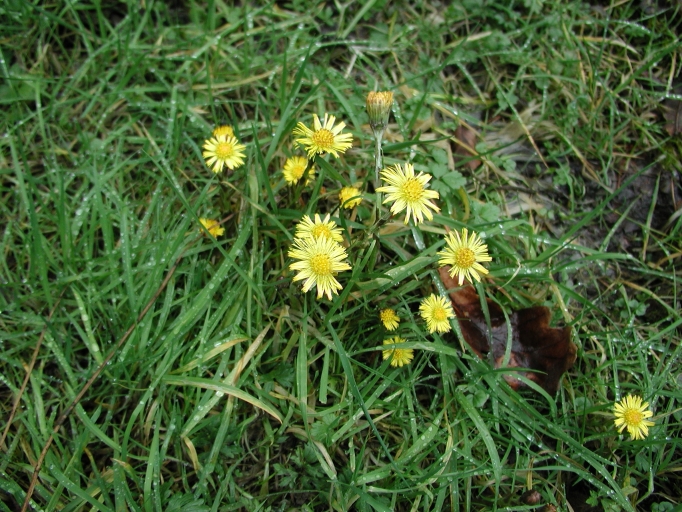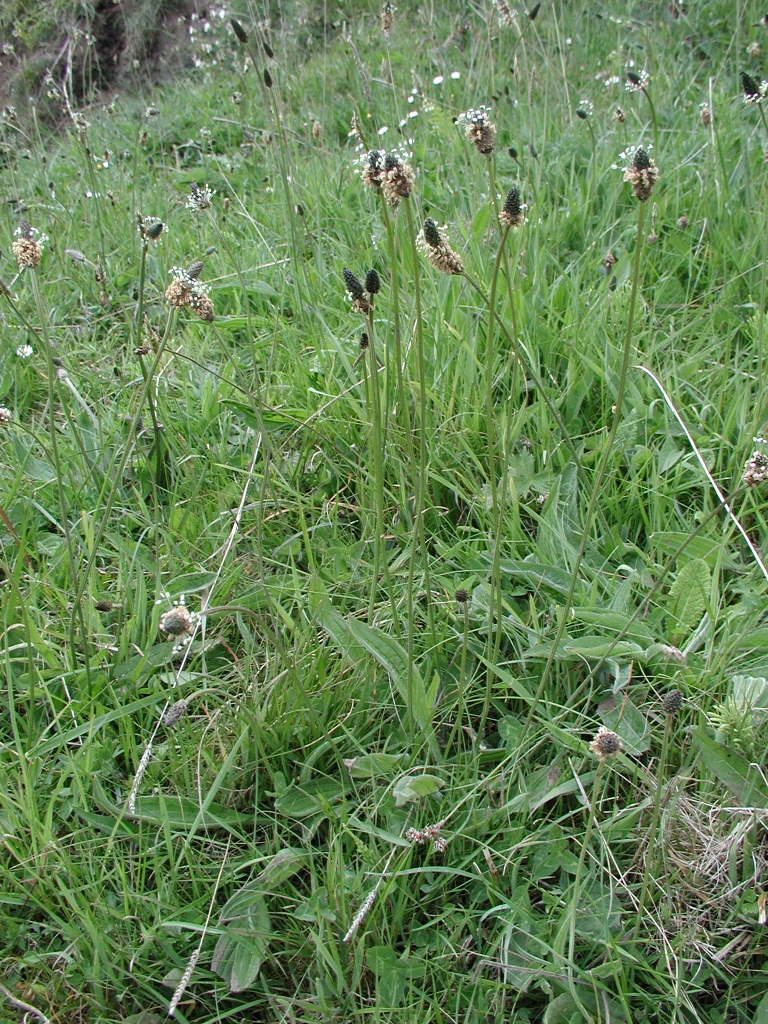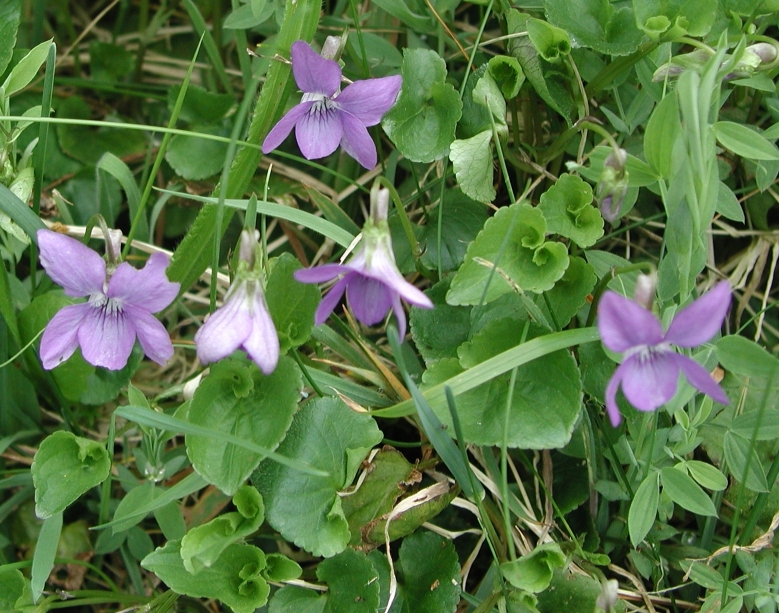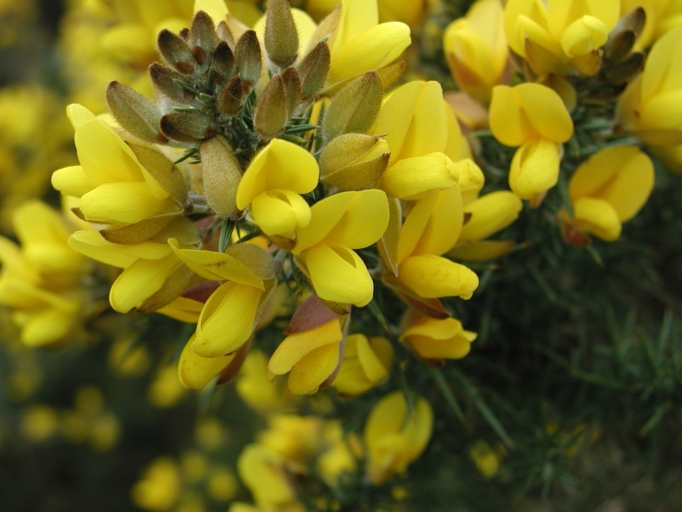INTRODUCTION
The collections of the Ulster Folk and Transport Museum include Archives in which are preserved large quantities of information about all aspects of the history of the local way of life. During the 1960's and 70's, Questionnaires were circulated on a regular basis from the museum to respondents throughout Ulster, and these now constitute a vital part of this Archival Collection. In 1965, a Questionnaire (UFM/65/Q2) on the subject of ‘Cures and Charms’ was distributed, and this paper presents an analysis of the replies received, which provide considerable insight into the subject of curing among social groups who, in the absence of freely available health care and in a period when medical knowledge was considerably less well developed than is now the case, largely needed to be self reliant when facing illness. The personal experience of the respondents reflects in most cases the early decades of the twentieth century and in a few cases the late nineteenth, but the knowledge base on which this experience is founded is likely to be much older, as can occasionally be unequivocally demonstrated. It should perhaps be stated at the outset that the paper comes with a health warning, as some of the cures mentioned in the source are at the least mildly alarming, and some likely to be downright dangerous. The approach is historical and ethnological, rather than medical. Don't try this at home!
GEOGRAPHICAL DISTRIBUTION
Responses to the Questionnaire came from all nine of the Ulster counties, with Co Antrim being the best represented, Co Cavan the least well. (Information relating to cures in Cavan is however available in Beatrice Maloney, ‘Traditional Herbal Cures in County Cavan,’ Ulster Folklife vol 18.) Table I shows that almost 50% (57 out of 112) of the data came from the eastern counties of Antrim and Down.
Table I.
Geographical Distribution of Responses
| Region | Representation |
|---|---|
| Co Antrim | 32 |
| Co Armagh | 12 |
| Co Cavan | 1 |
| Co Donegal | 11 |
| Co Down | 25 |
| Co Fermanagh | 9 (+1 unidentified, probably Fermanagh) |
| Co Londonderry | 12 |
| Co Monaghan | 2 |
| Co Tyrone | 17 |
In terms of individual cures, some responses make reference to places other than that designated by the respondent as the primary area to which he or she refers. Occasionally, this may be to a cure to be found in another region and known to the respondent for an unspecified reason, frequently to a cure available in a particular place. For instance, one respondent from Ballycastle in Co. Antrim refers to water from a certain well on Rathlin Island as a cure for warts, while occasionally Belfast is specified in relation to a visit to the gasworks to cure whooping cough.
THE DATA
In total, the 112 completed questionnaires provide 1153 individual cures. Occasionally, a respondent knew more than one remedy for a specific ailment. Table II illustrates the number of cures for individual ailments. This Table is divided into two groups, the first of which comprises the fourteen ailments on which information was solicited by the questionnaire. In terms of quantity, this accounts for the overwhelming majority of individually cited remedies. However, some respondents also provided unsolicited responses, and these are noted as Group B.
Table II.
Numbers of Cures, (Group A, Solicited, Group B, unsolicited)
| Ailment | No of References Recorded |
|---|---|
| Group A | |
| Asthma | 35 |
| Burn(s) | 101 |
| Cramp (differently interpreted by respondents) | 64 (+1 animal) |
| Epilepsy | 28 |
| Erysipelas | 31 |
| Headache | 70 |
| Jaundice | 37 |
| Mumps | 62 |
| Rickets | 11 |
| Sprain | 120 |
| Stye | 113 (+ 1, also for ‘sore eyes’) |
| Toothache | 104 |
| Warts | 162 |
| Whooping Cough | 134 |
| Group B | |
| Abscesses | 2 |
| Bed Wetting | 1 |
| Bloodlessness | 1 |
| Boils | 3 |
| Cancer | 4 (+1, malignant skin disease) |
| Chilblains | 3 |
| Cold (possibly in horse) | 1 |
| Cooling Blood | 1 |
| Corns | 1 |
| Cough (human or horse) | 1 |
| Cut | 2 |
| Earache | 1 |
| Eczema | 1 |
| Foreign Body in Eye | 2 |
| Hiccough | 5 |
| Hydrophobia | 1 |
| Infectious Diseases | 1 |
| Influenza | 1 |
| Kidney Trouble | 1 |
| Measles | 3 |
| Purgative | 1 |
| Quinsy | 1 |
| Rheumatism | 3 |
| Ringworm | 7 |
| Scald | 2 |
| Shingles | 1 |
| Sore | 1 |
| Sore Eyes | 4 |
| Sore Throat | 3 |
| Stings | 3 |
| Stomach Ache/Ailment | 4 |
| Thrush (Oral) | 1 |
| Tuberculosis | 4 (+1, ‘early TB’) |
| Ulcer | 1 |
| Varicose Veins | 1 |
| Wind/Colic | 1 |
| Wounds | 1 |
CONSISTENCY OF THE DATA
Some of the cures cited by respondents refer to commercially available products. For instance, three of the cures for asthma (one from Co. Londonderry, one from Co. Donegal and one from Co. Down) cite Friar's Balsam as an inhalant. I know from personal childhood experience that this was also used as a cure for a wheezing chest condition referred to in my family as ‘croup’. Glauber Salts are cited as a cure for toothache in one response from Moneymore in Co. Londonderry, while in another from Warrenpoint in Co. Down, Glauber Salts followed by oatmeal gruel provides a cure for headache. Mrs Cullen's Powders are referred to as a cure for headache in a response from Co. Monaghan. Of the references to cures for styes, 81 refer to thorns, almost always specifying gooseberry thorns, but these vary from merely a ‘touch with a gooseberry thorn’ to ‘seventh son of seventh son pierces stye seven times with gooseberry thorn’ or ‘bless three times with nine gooseberry thorns pointing’ or ‘pierce with twelve gooseberry thorns, throw these alternatively over left and right shoulder.’ Nine of the cures for stye refer to a wedding ring, one of these combining ring and thorn (‘prick with gooseberry thorn passed through gold ring.’) Another specifies that the ring used must belong to a ‘widow with a posthumous child.’ Twenty four of the cures for burns refer to baking soda, 20 to buttermilk, most usually in combination although each is also cited independently. 18 of the cures for erysipelas refer to butter, usually unsalted butter. Goose grease and eel skins are each mentioned eighteen times as cures for sprain (figure 1). Twenty five of the wart remedies refer to the effectiveness of either a snail or a slug, which usually must be rubbed on the wart and then impaled on a thorn. Another frequently mentioned remedy for whooping cough is to pass the sufferer under the belly of a donkey, although some specify the animal must be male, some female; some specify a particular number of times that the action should be repeated. For mumps, a roughly similar cure is cited. The victim should wear the blinkers of an animal and be led around the farmyard, visiting the various animal houses on the way. Occasionally, these are reversed so that the first is cited as a cure for mumps, the second as the cure for whooping cough. While it is possible that a degree of confusion has crept in for certain cases, there is also a reasonable degree of consistency in the reversal. Similarly, the belief that to lick the underside of a newt or ‘mankeeper’ provides a cure for burns is mentioned twice, but on one occasion this is given as the cure for asthma. (‘Keep newt or frog 2 or 3 days, lick back of hungry newt or frog, lick chest of sufferer.’) These and other examples provide evidence that belief in the efficacy of certain cures (if with certain specific refinements) was widespread across Ulster, but it is also clear that for many ailments there were several potential cures. For some of these, there is a strong degree of consistency, but some appear quite idiosyncratic. Geographical patterning does not generally account for the consistency, although both cures for ‘foreign body in the eye’ come from Co. Antrim, one from near Carrickfergus, one from near Ballymena. In each case, the cure is the same, ‘Charm, mote appeared in bowl of clean water’. However, it cannot be assumed that this cure was not known in other regions. The data from the questionnaire helps to provide a picture of traditional remedies in Ulster, but additional information as yet uncollated from other sources will help to contextualise and further interpret the evidence presented here.
Fig 1.
Lough Neagh Eel Fisherman, Thomas John Quinn, demonstrates the use of an eel skin bandage as a cure for sprain. (Photograph by TK Anderson).
PLANT BASED REMEDIES
Plant based remedies may appear more ‘rational’ than some of the cures preserved in the questionnaire, but even some of these are quite idiosyncratic. For instance, garlic is mentioned as a cure for asthma (the leaves should be chewed in one case, in another garlic should be taken in a salad, in a third the usage is not specified) for epilepsy (again the use is not given), garlic seeds steeped in whiskey are cited as a cure for measles, and garlic in the socks as a cure for whooping cough. One respondent commented that his ‘own remedy’ for jaundice ‘would be 3 or 4 oranges a day.’ The same person remarked ‘I have proved that eating about half a pound of grapes will bring very quick relief from influenza , but was also aware of cures known to others, and of plants whose curative powers are widely known. For instance, he remarked, ‘A friend of mine cured a leg ulcer with applications of raw plantain leaves’. Plantain is widely known as a remedial plant.1 Table III extrapolates from the Questionnaire all references to traditional plant based cures, although some of the names given are highly localised and occasionally incomprehensible.
Table III.
| Plant name | Ailment | Usage (if known) |
|---|---|---|
| Agrimony | Headache | Tea |
| Apple | Stye | 1 Poultice (of rotten fruit) |
| 2 Apply roasted | ||
| Ash | Jaundice | Boiled bark |
| Barbary | Jaundice | Green part boiled in milk placed next to skin |
| Blackheads | Asthma | Boil in sweet milk, drink liquor |
| To cool blood | ||
| Bogbane | Headache | Dried and eaten |
| Jaundice | ||
| Stomach ailment | Stewed roots ‘of bogbind’ | |
| Bogbane (‘bog beans’) and dandelion leaves | Boils (also rheumatism and ‘pains’) | Boil, drink liquor |
| Bogbane, burdock and rose noble | Bloodlessness | Simmer together, 3 tablespoons taken per day |
| Broom | Kidney trouble | Leaves stewed |
| Burdock | Eczema | Cupful of water in which roots boiled |
| Jaundice | ‘A dose’ | |
| Burdock, common dock and water dock | Jaundice | Boil equal parts of roots, drink 2/3 glasses of liquor daily |
| Bustry | Warts | Rub with leaf, bury leaf. |
| Buttercup | Warts | Leaves brought to woman who rubbed these on warts; ‘three good words’ said nine times |
| Buttercup or ‘cityfast’ (unclear if these are alternative names for same plant or alternative cures) | Cancer | Cured by brother and sister, plaster. |
| Celery | Rheumatism | Tea made from seeds |
| Erysipelas | Applied warmed and dry | |
| Chick(en) Weed | Mumps | Roasted on red coals and applied hot |
| Sore ears | Warm chick weed | |
| Sprain | Hold limb in spring of water and poultice with chick weed | |
| Clancummer | Erysipelas | Boil |
| Coltsfoot | Asthma | 1 Dried then burned and inhaled |
| 2 Extract from coltsfoot ‘really effective’ | ||
| Dandelion | Mumps | Juice |
| Warts | Juice | |
| Nettle sting (3 references) | ||
| Varicose veins | Boiled | |
| Dock/docken | Small burn | Cover with skin (thin and transparent) of leaf taken from at/below ground level |
| Cough (in human or horse) | Seed | |
| Sprain | Leaves | |
| Elderberry and Blackcurrant | Tuberculosis (early stage) | Syrup from leaves of both, stewed together and taken in quantity |
| Eyebright | Jaundice | Boil in milk, drink liquor |
| Burn | 1 Carron oil of linseed and lime water (5 references) | |
| 2 Raw linseed oil | ||
| Cold (in horse?) | Seed boiled, left overnight, few spoonsful taken. | |
| Mumps | Linseed poultice | |
| Flax | Sprain | Flax ‘straining string’ (linen thread) tied round affected part (4 references, also 2 to hemp cord, 1 to red cord, 1 to black thread and 1 to string knotted 3 times) |
| Whooping cough | 1 Seed boiled | |
| 2 Linseed oil mixed with liquorice | ||
| Asthma | 1 Leaves chewed | |
| 2 Eaten in salad | ||
| Garlic | 3 Unspecified | |
| Epilepsy | ||
| Measles | Seeds steeped in whiskey | |
| Whooping cough | Placed in socks | |
| Ground Ivy | Stomach ache | Stewed |
| Heather | Warts | Hot ash |
| Hemlock | Jaundice | Must be applied by certain person |
| Mumps | Stewed and applied as poultice | |
| Erysipelas | Boil leaves and apply | |
| Headache | Poultice | |
| House Leek | Sore eyes | Juice |
| Stye | 1 Apply leaf | |
| 2 Apply nine leaves | ||
| 3 Juice (2 references) | ||
| Jaundice bush | 1 Boiled in milk, drunk | |
| Jaundice | 2 Bark boiled, liquor drunk | |
| 3 Piece of ‘jaundice tree’ boiled, liquor strained and drunk | ||
| Laurel | Burn | Jelly of leaves stewed in unsalted lard |
| Liverwort | Jaundice | Boiled in milk |
| Moss | Sprain | Rub |
| Asthma | 1 Boil roots with honey | |
| Nettle | 2 Roots stewed | |
| Cramp | Sting limb | |
| Onion | Chilblains | Rub |
| Plantain | Burn | Raw leaves |
| Leg ulcer | Raw leaves | |
| Wounds | Leaves of ribwort plantain beaten to pulp, applied and covered with gauze | |
| Poppy | Sore eyes | Steam from seeds (presumably boiled) |
| Mumps | ‘Roast potato bandage’ tied round throat | |
| Rickets | Patient washed in hot potato water | |
| Potato | Quinsy | Hot poultice |
| Warts | Rubbed with raw potato (potato also features in quasi magical cures for warts) | |
| Primrose and ‘bourtry’ bush | Burn | Primrose leaves and ‘boutry’ bark boiled with butter, made into salve (unclear if all boiled together or butter used to make salve of boiled plants) |
| Primrose, speedwell and fairy flax (square stemmed variety) | Jaundice | Roots of primrose and speedwell boiled with stems of fairy flax in milk |
| Rhubarb | Jaundice | Juice |
| Erysipelas | 1 Poultice, which is made either with ‘fairy thimbles’ or using either plant. | |
| Rose Noble (‘figurant’) | 2 unspecified | |
| Tuberculosis | Berries boiled, liquor drunk | |
| Rose, wild (dwarf white) | Headache | Shoots stewed |
| Sage | Erysipelas | Leaves stewed in milk, liquor drunk, leaves applied as poultice |
| Sherlock | Sprain | Heat leaves on oven, handful of salt |
| Solomon's Seal | Toothache | Root |
| Sunspurge (‘devil's churnstaff’) | Malignant skin disease | Milk like juice |
| Swede | Boils | Boil, mash and apply as poultice. |
| Tansy | Purgative | Liquor of boiled plant |
| Jaundice | ||
| Tormentil | Stomach ache | Roots stewed |
| Violet | Cancer | Stew leaves, drain liquor and drink each morning |
| Whins | Headache | Eaten green |
| Influenza | Stew blossoms, drink liquor | |
| Yarrow | Hydrophobia | |
Fig 2.
Coltsfoot. (Photograph by Paul Hackney)
Fig 3.
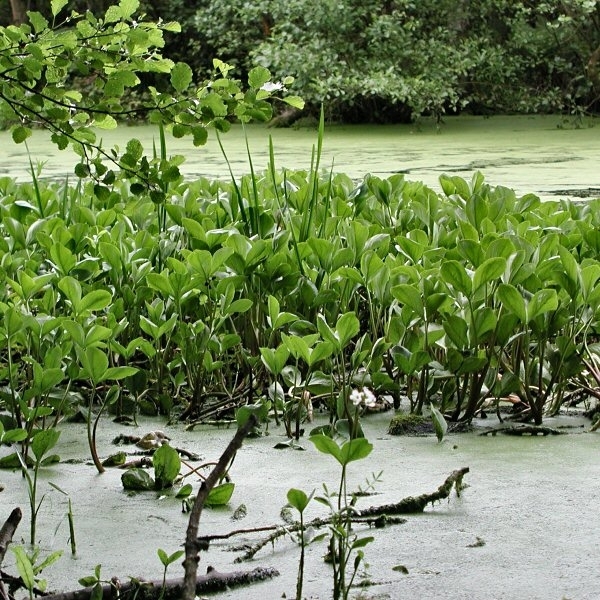
Bogbean or bogbane. (Photograph by Paul Hackney).
Fig 4.
Ribwort plantain (Photograph by Paul Hackney).
Fig 5.
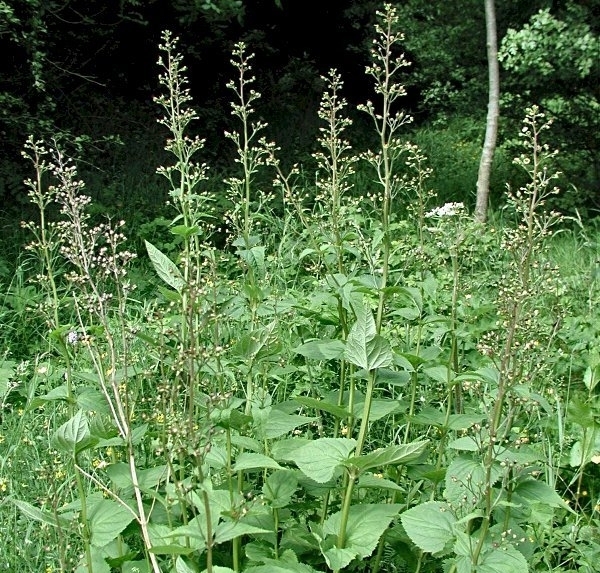
Rose Noble (Photograph by Paul Hackney).
Fig 6.
Violet (Photograph by Paul Hackney).
Fig 7.
Whins (photograph by Paul Hackney).
I have used the precise spellings for plant names given in the source. Sherlock is likely to be charlock, both bustry and bourtry are most likely to be bore tree, or elder (Sambucus nigra.) Botanist Paul Hackney, who has kindly provided the Latin names (Table IV) and associated information included above, remarks of vernacular plant names ‘they may be very local, or inconsistently applied to quite different species, or corrupted forms of standard names.’ (Personal communication, 30 May 2008.) Bearing this caution in mind, it is the case that with the exception of blackcurrant, laurel, potato, swede and the mysterious cityfast and clancummer, all of these plants are in some way included in Medicinal Plants in Folk Tradition, although this book does not refer to the museum's questionnaire. The respondents therefore are referring to plants with reputations as medicinal, even if the applications listed above do not always match those mentioned in the book. The information they provide sits in a framework of medical efficacy also established elsewhere, and has the potential to make an additional contribution to this body of knowledge. It should be noted that while most of the references included in the table appear purely herbal, some are quasi magical, also involving the use of charms.
Table IV.
Latin Taxonomy
| Popular Name | Latin Taxonomy (where identifiable) |
| Agrimony | Probably Agrimonia eupatoria or Agrimonia procera, but may refer to ‘hemp agrimony’ (bastard agrimony, Dutch agrimony, water agrimony etc.) which is Eupatorium cannabinum |
| Apple | Malus sylvestris |
| Ash | Fraxinus excelsior |
| Barbary | Berberis (several species) |
| Blackcurrant | Ribes nigra |
| Bogbane | Menyanthes trifoliate |
| Boutry bush, also bustry | Probably Sambucus nigra |
| Broom | Cytisus scoparius |
| Burdock | Arctium minus |
| Buttercup | Ranunculus spp. |
| Chick(en) Weed | Stellaria media |
| Coltsfoot | Tussilago farfara |
| Dandelion | Taraxacum spp. |
| Dock/docken | Species of the genus Rumex |
| Elderberry | Sambucus nigra |
| Eyebright | Euphrasia officinalis |
| Fairy thimbles | Probably Digitalis |
| Flax | Linum usitatissimum |
| Garlic | Allium ursinum |
| Ground Ivy | Glechoma hederacea |
| Heather | Erica cinerea, Erica tetralix, Calluna vulgaris |
| Hemlock | Strictly speaking, Conium maculatum, but respondents might be referring to hemlock water dropwort which is a much commoner plant in the same family, also poisonous, Oenanthe crocata |
| House Leek | Sempervivum tectorum |
| Jaundice bush | Probably Berberis |
| Liverwort | Many species. The commonest ones are Pellia species and Conocephalum conicum. |
| Nettle | Urtica dioica |
| Plantain | Any species of Plantago. The two commonest ones and the most likely intended are Plantago lanceolata (ribwort plantain) and Plantago major |
| Poppy | Papaver spp. |
| Potato | Solanum tuberosum |
| Primrose | Primula vulgaris |
| Rose Noble | Scrophularia nodosa |
| Sherock | Sinapis arvensis |
| Solomon's Seal | Polygonatum |
| Sunspurge | Euphorbia helioscopia |
| Swede | Brassica napus subsp. Rapifera |
| Tansy | Tanacetum vulgare |
| Tormentil | Potentilla erecta |
| Violet | Viola riviniana |
| Whins | Ulex europaeus |
| Yarrow | Achillea millefolium |
POULTICES, OINTMENTS AND INFUSIONS
Table III illustrates that occasionally plants provided the basis for poultices and infusions, but these were also prepared from other substances. A poultice of carbolic soap, milk and sugar is recommended in one case for boils. A flour and honey poultice is mentioned as a cure for an abscess, one of fat bacon for corns. For erysipelas, one source cites a poultice of black peat from bog hole, which should have no contact with air and be boiled in churned buttermilk. Another recommends bog water with unsalted butter for the same ailment. Hot bran applied as a poultice is once mentioned in the context of mumps. For a sprain, the recommendation is either a poultice of salt curd of sweet milk and buttermilk, or of oatmeal porridge. A cold tea leaf poultice is cited once as a cure for stye. A sock full of hot salt, sometimes called a ‘salt poultice’ is frequently recommended as a treatment for mumps and for toothache. However, the most frequently cited poultice is of cow manure, occasionally with refinements such as this should come from one animal and sometimes with the specification that it must be fresh. Sometimes it is used in combination with another element, usually clay. Cow manure is recommended for abscess, burns, erysipelas (mixed with flour), and scald. A poultice of goose manure is recommended for mumps, while for jaundice goose manure should be boiled in a cloth in milk, and the milk drunk. Ginger boiled in milk as a cure for cramp is frequently mentioned and sounds much more palatable. We have seen that eel skins and goose grease are both recommended as remedies for sprain, and in one case the application of a split salted fish is also suggested, with the note that it is very effective, although it smelled ‘rather badly.’ The juice of a ‘gunnadoir’, described as a ‘stingfish found under rack’ is mentioned as a cure for asthma. Soup of mouse flesh provides a cure for bedwetting in one reference from Co. Down, while a Co. Fermanagh source mentions otter soup for epilepsy. Saffron tea is recommended for measles. Cold water, usually from a spring, may be used as a rub or recommended to be drunk, in one case from a cow's horn. Blacksmith's cooling water (in which hot iron has been cooled) is recommended as a remedy for both rickets and warts (on one occasion, it is stipulated that the water must be taken without the knowledge of the smith, but it is impossible to know if this was to ensure efficiency or because the smith in question disapproved). Simple massage is also recommended in several cases. Occasionally, human urine features in cures. For jaundice, one cure suggests that the patient drinks his or her own urine, another that the patient urinates on an egg, then while praying places the egg in a south flowing stream. In one case, drops of liquor amnii are recommended as a cure for both styes and sore eyes. Pig's blood is frequently recommended as a cure for warts, and sometimes it is necessary for the sufferer to thrust wart infested hands into the throat of a newly slaughtered animal. Other substances mentioned as having curative properties are saltpetre, brown paper, mustard, whiskey, flannel, cloves, tobacco and one of the more alarming, for toothache, is a ‘pea of “carobine” and light when wet in mouth.’
CHARMS
Occasionally, all of the above categories of cure may involve a particular person, the repetition of a prayer or formula, or a combination of these. Sometimes, for example in the case of using gooseberry thorns to cure styes, substance, individual and ritual all contribute to the remedy. The distinction between differing categories of cure is not always completely clear cut. In the case of blacksmith's cooling water, it is not clear whether the cure relates to the powers traditionally associated with this craft or to a chemical property of the water. The blacksmith is cited or implied in certain other cures too. In one case, the eldest blacksmith in the area is said to have a cure for rickets. Passing ‘three times over the anvil’ is mentioned as a cure for asthma. One cure for epilepsy in a child is described, ‘child's head placed on anvil, other side of which struck by smith’. Reference to a terrifying experience of this sort is also found in other sources. For example Dr Francis McPolin, the principal of Ballymaghery Boys' School in Hilltown who made an important collection of folklore in his home area during the 1940's, mentions in his notebooks that a certain ‘Blacksmith, (at) the Alt, tells me he is of the third or fourth generation of Blacksmiths and so he can cure, and did cure, rickets in children. He strips the kid, lays him out on the anvil, makes nine winds at him with the sledge hammer, washes him in the cooling water and then blesses him with a crucifix’. (These Notebooks are preserved in the Archive of the Ulster Folk and Transport Museum.) Other people referred to as acquiring cures by virtue of their status are children born in a particular point of the family sequence, occasionally third, but most usually seventh or seventh of seventh, sometimes but not always in a chain of the same gender. Married women, or occasionally a couple in which the wife's surname is unchanged, posthumous children, widows and widows with posthumous children are also mentioned. There is a reference to an occasion on which a person who has the power to cure loses this when the charm is used for an animal instead of a human. Cures may also be obtained at certain places, especially holy wells. In one cure for toothache, from Donegal, the recommendation is to say prayers to St Columbcille at certain stone in the graveyard of the abbey in Templedouglas graveyard, after which the afflicted jaw should be rubbed on the stone.
The practices both of leading a person around animal houses (or to a well) while wearing blinkers and passing him over and under a donkey are sometimes described as ‘charms’, and may involve a degree of ritual, especially in the number of times or the time at which the action is repeated. However, some of the respondents refer to the possibility of there being a curative aspect in animal proximity. One remedy for mumps is that the suffered should rub a cheek against ‘the pigcroo door.’ Another, for asthma, recommends the patient to ‘remain in or above stable, “ammonia of urine”’. Similarly, the numerous wart cures that recommend rubbing the affliction with a snail also insist that the snail must then be impaled on a thorn, while those that prefer rubbing with raw potato sometimes state that this must be cut into certain number of pieces and/or be disposed of in a certain way. Warts may also be sold, or disposed of in various ways in the proximity of funerals. Whooping cough is frequently said to be cured by a woman whose name is unchanged at marriage, although occasionally she must give something, most usually food, the type and/or quantity of which may be specified, to the patient. A pinch of a material ‘that cannot be counted’ should be thrown at someone suffering from epilepsy. Another cure for epilepsy, one that is perhaps surprising in a local context, is ‘Bury a live hen at patient's head’ (if necessary carry the person to suitable place in order to carry this out.) Cures for sprain are often attributed to a certain person who must be visited and who recites prayers or incantations while rubbing the wounded part. This cure is still extant, and I can vouch for its effectiveness (at least for a short time) as I have experienced it myself. Finally, the Questionnaire responses include a version of the ancient charm Super petram, a cure for toothache which Jonathan Roper has traced to the tenth century2.
The Archive of the Ulster Folk and Transport Museum includes in addition to this Questionnaire various other sources relating to traditional cures. These are in the form of notebooks and audio recordings, which offer additional potential resources for the study of traditional medical practice in Ulster. However, this Questionnaire itself provides a substantial amount of data, which demonstrates that curers in past society had the capacity to draw on a range of skills, including no doubt psychological insight. It also shows that belief must frequently have been a powerful element in curative practice, as on occasion must a considerable degree of risk. Recently an examination of the in vitro antibacterial and antifungal efficacy of several of the plant remedies in table III has been reported3.
Acknowledgments
Thanks to Paul Hackney for scientific identification of plant species. I am also grateful to Prof JE Moore for his encouragement to prepare this paper. All photographs are reproduced courtesy of the Trustees of the National Museums and Galleries of Northern Ireland.
The author has no conflict of interest to declare.
REFERENCES
- 1.Allen David E, Hatfield Gabrielle. Medicinal plants in Folk Tradition: an Ethnobotany of Britain and Ireland. Cambridge UK: Timber Press; 2004. Jan, [Google Scholar]
- 2.Roper Jonathan. English Verbal Charms. Helsinki: Academia Scientiarum Fennica; 2005. pp. 122–125. 2005) Folklore Fellows Communication No 288. [Google Scholar]
- 3.Woods-Panzaru S, Nelson D, McCallum G, Ballard LM, Millar BC, et al. An examination of antibacterial and antifungal properties of constituents described in traditional Ulster cures and remedies. Ulster Med J. 2009;78(1):13–15. [PMC free article] [PubMed] [Google Scholar]




